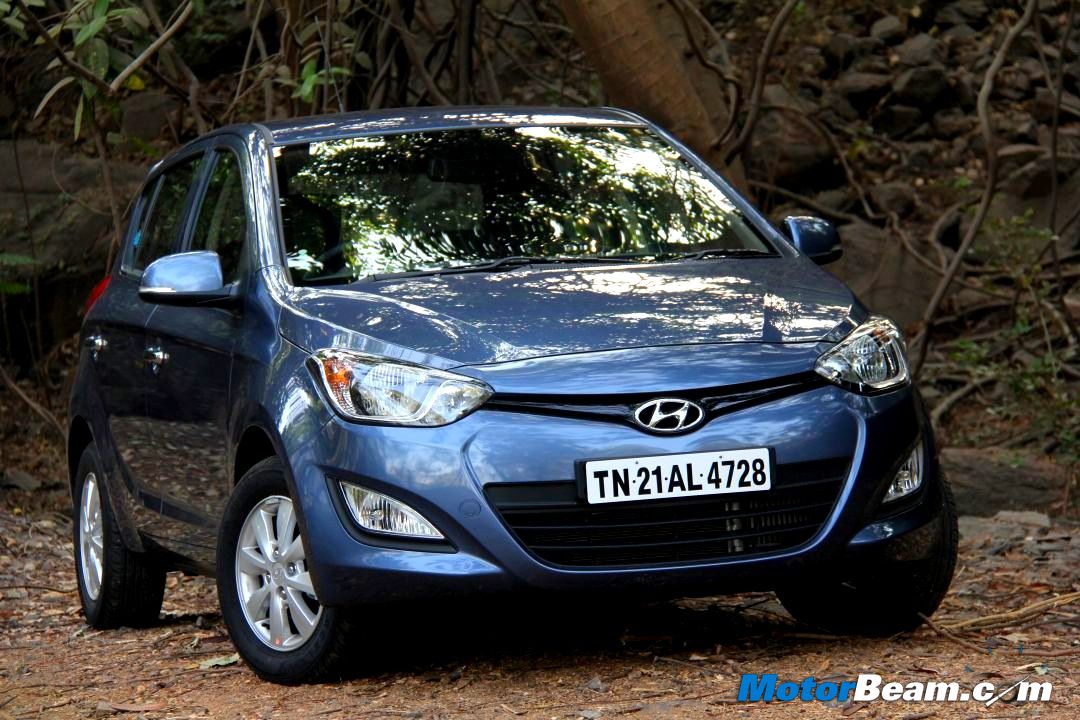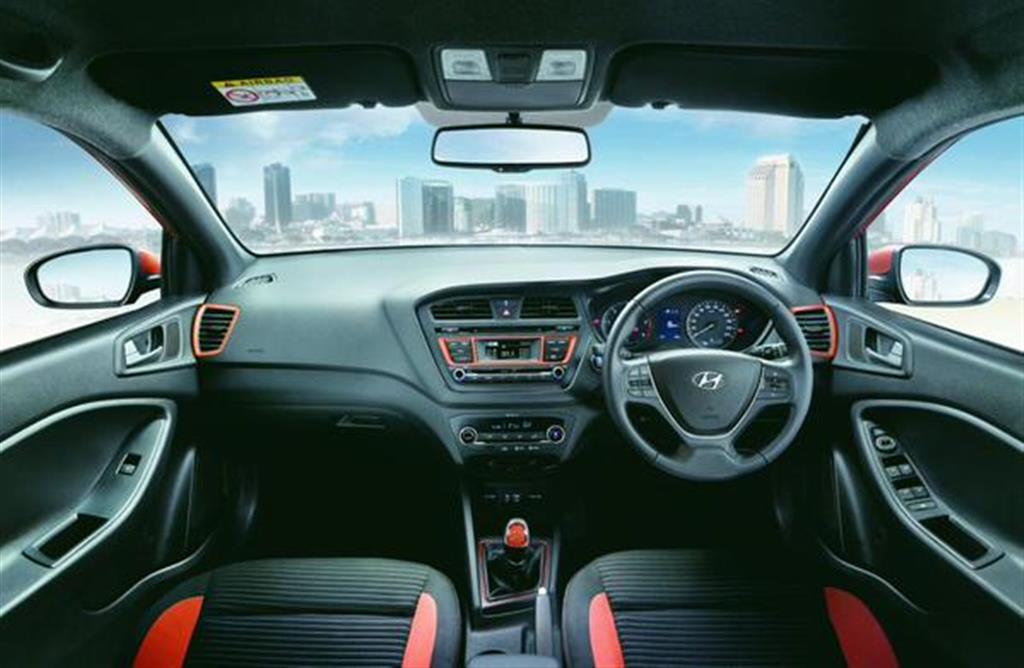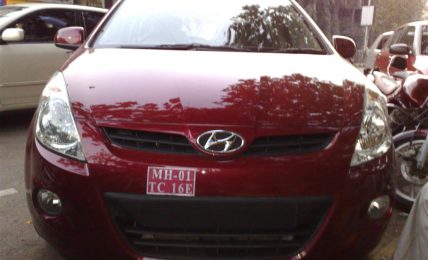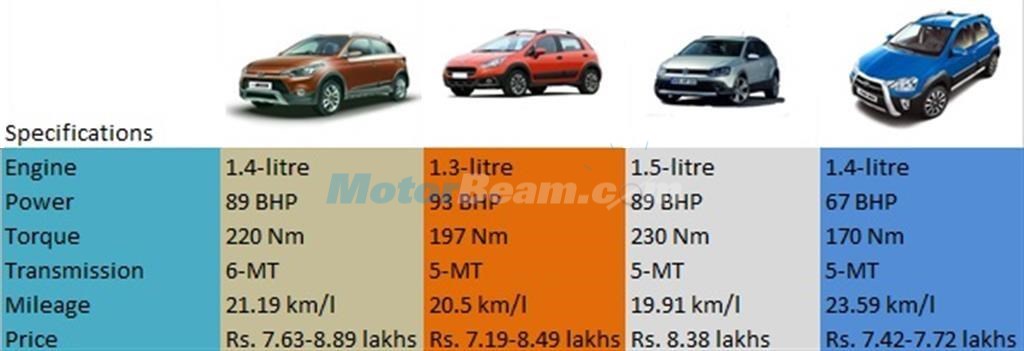
Hyundai i20 Review
Car tested: 2012 Hyundai i-Gen i20
Price OTR Mumbai: Rs. 5.52 – 8.98 lakhs
The Fluidic design has created mayhem in the market and Hyundai has been at the receiving end with a waiting period exceeding 6 months in the case of the Verna. Following the Verna’s footsteps, the Hyundai’s i20 has just undergone the surgeons knife to come out in a more good looking and sporty avatar. The Hyundai i20 made it’s debut at the 2008 Paris Motor Show and went on sale almost immediately in India by December 2008. We drive the new iGen i20 and find out whats new.
[singlepic id=12056 w=540 h=375 float=center]
Exteriors – The iGen Hyundai i20 now incorporates Hyundai’s Fluidic design elements. The maximum change is appreciated in the front fascia. The i20 gets the hexagonal family grille with new wrap around headlamps and trapezoidal fog lamps. The international version gets daytime running lamps too. The chrome Hyundai logo is complemented by the black grille.
[singlepic id=12029 w=540 h=375 float=center]
There is not much change in the side profile except for the chrome door handles and turn indicators on the outside rear view mirrors. Courtesy of the new bumpers the length has been increased by 55 mm, everything else is absolutely the same as the first generation car.
[singlepic id=12031 w=540 h=375 float=center]
The rear is mostly unchanged too. What’s different is a new bulging tail lamp cluster and a rear spoiler with integrated stop lamp. Just under the boot opener lies the rear camera which can be noticed on careful observation.
[singlepic id=12038 w=540 h=375 float=center]
Interiors – Not much is different on the inside as well, the gear lever gets a dose of chrome and overall quality is top notch. Fit and finish gave us no reason to complain either. The leather wrapped steering feels good to hold and the Hyundai i20 is still as spacious as before with generous boot space.
[singlepic id=12041 w=540 h=375 float=center]
The new Hyundai i20 gets digital temperature and fuel gauge instead of the analog ones in the previous generation car. There is a digital speedometer too. The drivers seat is blessed with an armrest too. There is no denying that the Hyundai i20 is loaded up to the brim with gizmos and goodies. No other hatchback comes anywhere close as far as the equipment list goes.
[singlepic id=12043 w=540 h=375 float=center]
You now get rear parking sensors and camera. Similar to its elder sibling, the Verna, part of the inside rear view mirror acts as the screen once you engage the reverse gear.
[singlepic id=12040 w=540 h=375 float=center]
Nissan had introduced the intelligent key and push button start with the Micra in the hatchback segment. The new i20 gets the same now. There are request buttons on both the front doors, just press them and the doors will unlock/lock provided the keys in your pocket.
[singlepic id=12045 w=540 h=375 float=center]
The list just goes on and on. Few first in segment features are automatic headlamps and rain sensing wipers and rear parking camera, as already discussed. Other features include six airbags, auto dimming inside mirror, rear disc brakes, impact sensing auto door unlocking, Bluetooth, etc.
[singlepic id=12055 w=540 h=375 float=center]
Rear leg room is good and one can sit in comfort without feeling claustrophobic. Another segment first is the smart pedal system. At first I thought its a marketing gimmick but having tried it, i realized it really works. In panic situations, many tend to apply the accelerator and brake at once, this can cause the car to accelerate and my be dangerous. In the i20, if case such a situation arises, the brake pedal will override the accelerator and get the car to stop.
[singlepic id=12037 w=540 h=375 float=center]
The i20’s boot is quite large at 295-liters and the low loading bay adds to that advantage.
[singlepic id=12060 w=540 h=375 float=center]
Performance – The petrol version is powered by a 1.2 liter Kappa engine with dual VTVT in Hyundai speak or variable valve timing as we like to call it. This engine is mated to a 5 speed manual gearbox. There is also an option of a 1.4 liter Automatic variant with a 4 speed auto box. On paper, the 1.2 engine produces 84 Ps @ 6000 rpm of peak power which is 5 % more than the earlier version, but getting behind the wheel, it does not feel different at all. Torque has been marginally increased by 0.2 kgm to 11.6 kgm @ 4000 rpm. Low end grunt is average and the i20 does not feel powerful enough, though the midrange and high end is decent. Obviously the engine has been tuned for efficiency and does well on that front giving an ARAI certified mileage of 18.5 km to a liter. Translating this to the road, you will need to downshift frequently to extract the best of this engine. On the other hand, engine refinement and NVH have been vastly improved. It’s hits the redline at 6500 rpm in a tamed manner.
[singlepic id=12036 w=540 h=375 float=center]
The 1.4 CRDI diesel engine is an absolute gem and easily outshines its petrol counterpart. Smooth and refined, this engine redlines at 5000 rpm and performance is not lacking on any front. The turbocharger now kicks in at 1500 rpm, a full 250 rpm earlier thereby eliminating the turbo lag altogether. This diesel motor produces 90 ps @ 4000 rpm with a torque of 22.4 kgm @ 1500-2750 rpm. Mileage is marginally better at 21.9 km per litre thanks to the electronically controlled turbocharger which optimises air flow leading to higher combustion efficiency. This also results in lesser emissions and a better performance. Mated to this is a 6 speed manual gearbox. This gearbox has evenly spaced out ratios which give you the best of city and highway performance. The sixth gear will find use on the highways.
[singlepic id=12023 w=540 h=375 float=center]
Ride, Handling and Braking – Suspension has been tweaked and the i20 now absorbs undulations happily without transferring much into the cabin. Unlike the older version, the ride is compliant at slow speeds. Its a pleasure to drive in traffic too with a light steering. This comfort oriented suspension setup takes a toll on the ride at high speeds. Steering feedback is negligible and the car seems nervous on the highway. Even hard braking from triple digit speeds will unsettle the car. Highway manners aside, the i20 wont give you a single reason to complain.
[singlepic id=12026 w=540 h=375 float=center]
Conclusion – With so many gizmos on offer, the i20 is understandably more expensive than the top end Maruti Suzuki Swift. It is the most loaded offering in the segment too with many first in segment features. If your use is mainly in the city, this is the best hatchback money can buy.
[singlepic id=12024 w=540 h=375 float=center]
Whats Cool
* Feature loaded
* Powerful diesel engine
* Spacious interior and large boot
* Effortless to drive in city
Whats Not So Cool
* Fluidic styling doesn’t appeal all
* Handling not sharp enough
* No LEDs or 15-inch wheels




